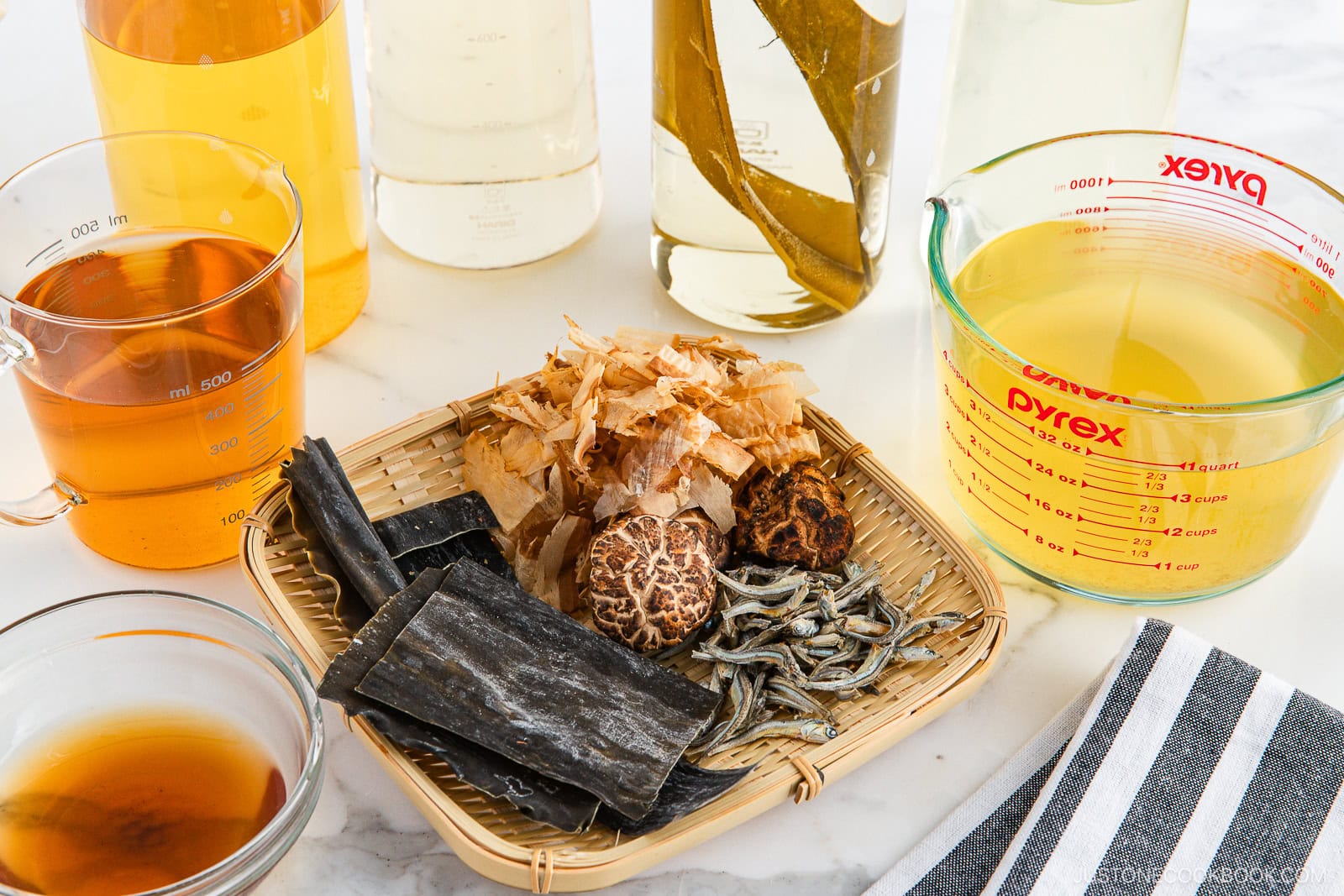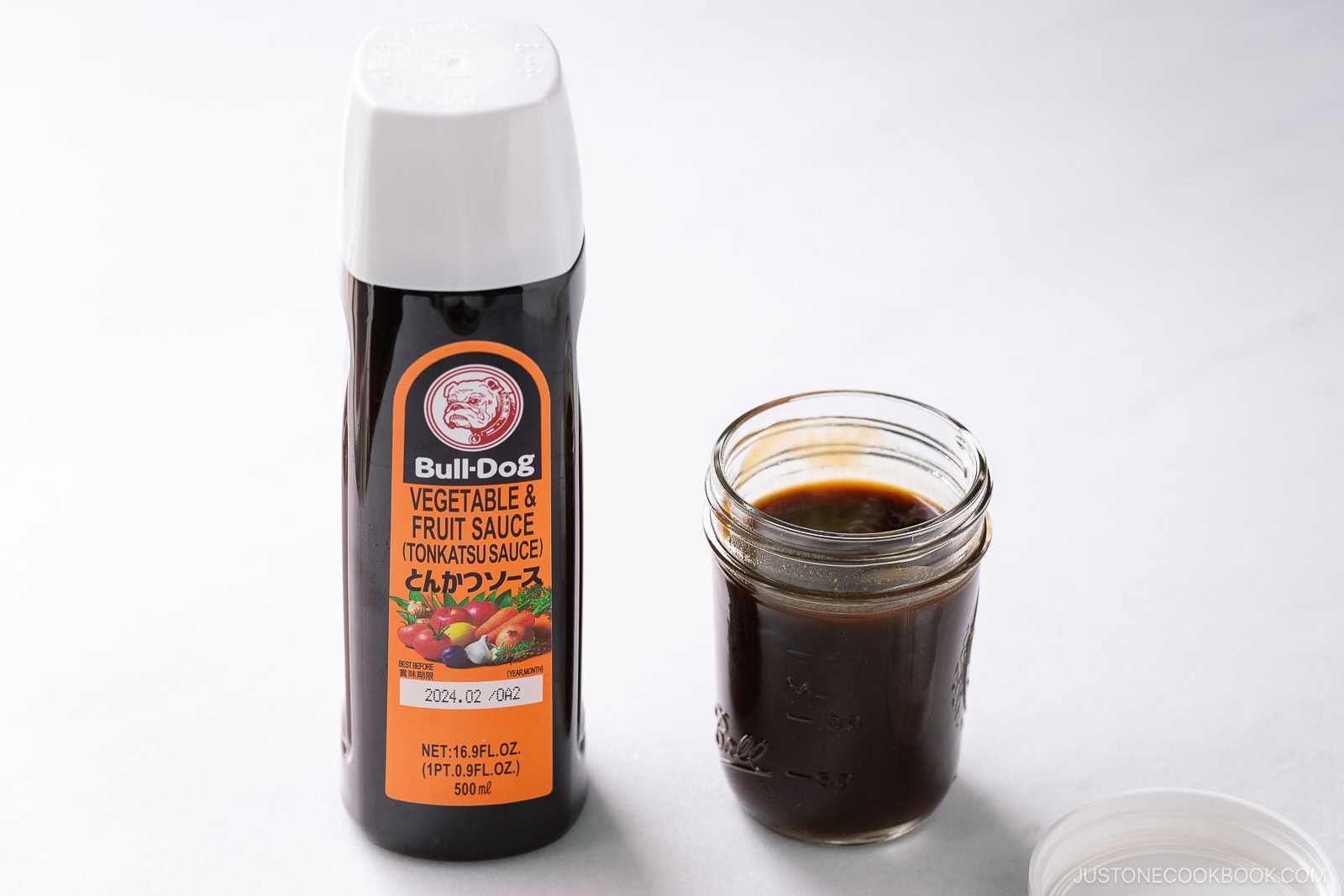If you’ve ever wondered “what is dashi” and how to make it, look no further! In this ultimate guide, I’ll explain the different types of Japanese soup stock, ingredients used, and ways to cook with these umami-rich stocks in Japanese dishes.
Dashi is a foundational ingredient in Japanese cuisine. This guide will delve into the various types of Japanese soup stock and provide instructions on how to make it from scratch. You’ll soon be ready to whip up simple Japanese recipes like Homemade Miso Soup and Udon Noodle Soup!
What is Dashi?
Dashi (だし, 出汁) or dashijiru (出し汁) is Japanese soup stock made from one or more ingredients like dried kelp, dried bonito flakes, dried shiitake mushrooms, and/or dried anchovies. These ingredients are naturally rich in glutamates, delivering intense flavor and imparting the rich umami taste characteristic of Japanese cuisine. The use of dashi in everyday Japanese cooking dates back to the 17th century.
Why I Love Dashi
- Simple ingredients, usually just one or two.
- Quick to make – It takes 20 minutes from scratch or just 5 minutes with a packet.
- Layers of flavor – It’s essential to many of my favorite dishes.
- A plant-based dashi option is available, making Japanese food accessible to everyone.
How to Use Japanese Soup Stock
- In soups like miso soup for an authentic umami flavor.
- As a broth base for Japanese hot pots, stews, simmered dishes, and noodle soups.
- As seasoning for rolled omelettes, mixed rice, or grilled octopus balls.
- In sauces for a touch of clear liquid that adds savory depth and subtle aroma.
Ingredients for Dashi
- Kombu – dried kelp (a type of seaweed)
- Katsuobushi – dried and fermented skipjack tuna/bonito, shaved into thin flakes
- Iriko or niboshi – dried anchovies/sardines
- Shiitake – dried shiitake mushrooms
*vegan and vegetarian options available
Six Different Types of Dashi
Choosing the right type of dashi for a dish often depends on traditional practices, but there are no strict rules.
1. Awase Dashi (合わせだし)
- made with dried kelp and bonito flakes
- means “combination” or “mixed”
- classic all-purpose stock; most commonly used
- my go-to soup stock for recipes
Use it in:
2. Kombu Dashi (昆布だし)
- made with dried kelp
- vegetarian/vegan
- gentle flavor
- ideal for fish, seafood, or subtle ingredients
- the easiest stock to prepare
Use it in:
3. Katsuo Dashi (鰹だし)
- made with dried bonito flakes
- aromatic, flavorful, and elegant
- great for simmered dishes, noodle soups, and vegetables
- not recommended for fish dishes
Use it in:
4. Iriko Dashi (いりこだし)
- made with dried baby anchovies/sardines; most affordable option
- strong, fishy aroma and taste
- savory stock that complements flavors like soy sauce
- not recommended for fish dishes due to strong flavor
Use it in:
5. Shiitake Dashi (干し椎茸の戻し汁; 椎茸だし)
- byproduct of rehydrating dried shiitake mushrooms
- vegetarian/vegan
- rarely used alone; typically combined with kombu or katsuo stock
Use it in:
6. Vegan Dashi (精進だし)
- made with dried kelp and shiitake mushroom soaking liquid
- vegetarian/vegan
- more flavorful than kombu stock
Use it in:
- any recipe to make it friendly for vegans and vegetarians
Three Ways to Make Dashi
In just 5 to 20 minutes, you can prepare a stock for your favorite Japanese recipes.
Method 1: Dashi from Scratch
Cook time: 20 minutes
Pro: Best flavor
How to make: Add ingredient(s) to a pot of cold water and very slowly bring to a near boil. Steep and strain. This method can also be used for cold brew (most types).
Method 2: Dashi Packet
Cook time: 5 minutes
Pros: Very good flavor; convenient
How to make: Add to a pot of cold water and bring to a boil. Reduce heat and simmer for 2–3 minutes. Discard the packet.
Where to buy: Local Japanese grocery stores; hard to find at other Asian grocery stores.
My recommended brands: Kayanoya Dashi Packet (preservative-free, slightly pricey); Yamaki Dashi Packet; Yamasan Chaganju.
Method 3: Dashi Powder
Cook time: 3 minutes
Pro: Fastest method (instant). Con: Least flavor; use only in a pinch.
How to make: Dissolve the dashi granules into water and heat to a boil.
Where to buy: Hondashi and Dashinomoto are common brands. Available in Asian or American grocery stores.
My recommended brands: Shimaya awase dashi powder and Shimaya kombu dashi powder.
Watch How to Make Dashi
Storage and Reheating Tips
To store: Transfer leftover stock to an airtight container and refrigerate for 3–4 days or freeze for up to 3 months.
To reheat: Simmer in a small pot over medium heat until warm, or microwave in 30-second intervals until fully reheated.
Frequently Asked Questions
There’s no perfect substitute. You can use chicken stock, seafood broth, or mushroom broth, but the flavor will differ significantly.





